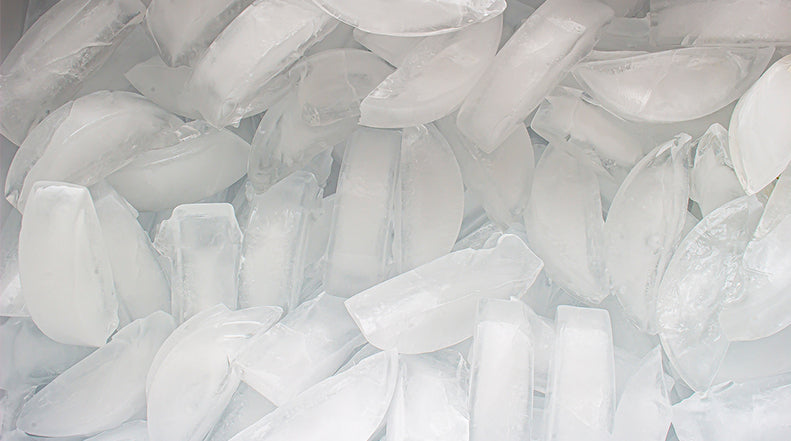5 Things You Should Never Put on a Wound

When you get a cut or scrape, do you have a natural instinct to grab the bottle of peroxide and immediately rinse the area with it, wincing in pain the whole time? Or how about grabbing an ice cube to cool down your skin after a burn? Even though these treatments have been passed down through the generations, experts caution against these and many other DIY home remedies for treating wounds. A recent article by the Los Angeles Times got the input from Dr. Kazu Suzuki, director at Tower Wound Care Center in Los Angeles, who said, “In the wound care world, we say, ‘Don’t put anything in your wound that you wouldn’t put in your eye.” Therefore, below we are going over five things you should never put on a wound as well as what you can put on a wound to help it heal properly.
1. HYDROGEN PEROXIDE
The use of hydrogen peroxide on wounds seems logical at first: the bubbling action removes debris from the wound that could potentially lead to an infection. However, experts agree that hydrogen peroxide is too harsh and irritating for an open wound. According to wound specialist Dr. Walter Keller, “The hydrogen peroxide bubbling releases pure oxygen, which kills bacteria but also the healthy cells, slowing down wound healing.” Therefore, hydrogen peroxide is one thing you should never put on a wound.
2. RUBBING ALCOHOL
The same reason you should never put hydrogen peroxide on a wound applies to rubbing alcohol: it’s too irritating! Rubbing alcohol, or isopropyl alcohol, it a topical antiseptic. While it’s true that rubbing alcohol will kill some bacteria, it will also kill and irritate healthy skin and the wound bed.
3. BETADINE
Betadine, also known as povidone-iodine (PVP-I) or iodopovidone, is an antiseptic used for skin disinfection before and after surgery. It is a chemical complex of povidone, hydrogen iodide, and elemental iodine, containing from 9% to 12% available iodine. Betadine works by releasing iodine which results in the death of a range of microorganisms.
Since Betadine is sold over-the-counter, many people use this solution as a home remedy to prevent wound infection. Once again, however, experts agree that Betadine is too harsh to put on a healing wound. Side effects include skin irritation, but if Betadine is used on large wounds it may cause kidney problems, high blood sodium, and metabolic acidosis to occur.
4. ICE
Ice seems like the perfect remedy for skin that has just been burned, right? While it may seem like common sense, this is another home remedy that is less than helpful. In fact, there is even research to support that ice should never be used for burns. For instance, one study published in the journal Burns compared the use of ice cubes for 10 minutes to ease burns with other remedies and found that ice caused “the most severe damage.” Ice is too harsh and may further aggravate the already damaged skin. According to the Mayo Clinic, putting ice on a burn can cause frostbite and damage the skin.
5. BUTTER
Putting butter or other types of grease on a burn is another old wive’s tale that may cause even more damage to tender skin. First, the grease will slow the release of heat from the skin, which is the opposite of what you want after a burn. Also, clothing or other materials can get stuck to the butter on the burn, causing damage to the skin or pulling the skin off completely.
WHAT YOU SHOULD PUT ON A WOUND
Now that you know five things you should never put on a wound, you’re probably wondering what you can put on a wound to help it heal properly. In the LA Times article, Dr. Suzuki recommends immediately rinsing an open wound, such as a cut or deep scrape, with clean running water for a few minutes. For a burn, the Mayo Clinic suggests running cool water over the area and taking a pain reliever.
Once the wound is clean enough, apply direct and firm pressure with clean gauze or a clean towel for a few minutes. Lastly, the open wound should be covered and kept moist. To keep your wound moist, you can use a plain ointment, such as Aquaphor, and cover it with a sterile Band-Aid.
Keeping your wound moist may be the opposite of what you’ve heard in the past since the common belief is that wounds need to be “aired out”. But did you know that airing out a wound is actually one of the worst things you can do for it? Dr. Suzuki states that keeping your wound moist until it heals completely “results in the fastest wound healing with minimal scarring.”
Once the wound has closed, you can help to reduce the size and appearance of scarring by using silicone based gel and gel sheets, which are clinically proven to reduce scars. In fact, silicone gel products are the only topical treatments recommended by the scar experts who create scar treatment guidelines for other doctors. Browse the wide variety of silicone gel products offered by NewGel+ to reduce, flatten, and fade your scar!




Comments